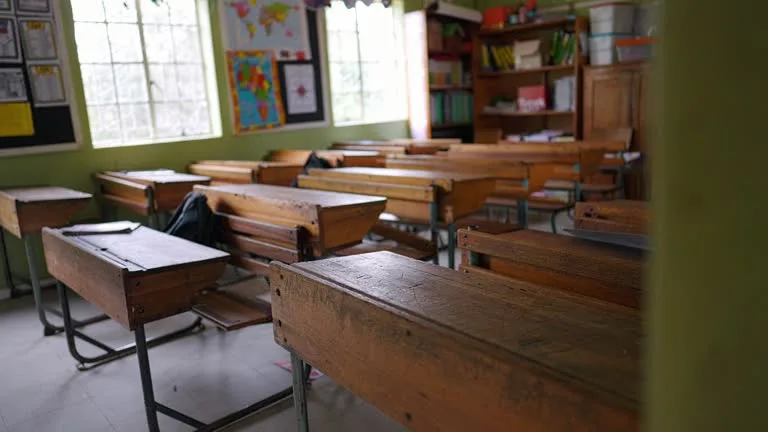Over 10,000 Idle Classrooms in Secondary Schools Turned Into Dining and Dorm Spaces.
Over 10,000 classrooms were constructed in secondary schools across Kenya under the leadership of former President Uhuru Kenyatta. These classrooms were intended to accommodate learners transitioning to junior secondary schools under the Competency-Based Curriculum (CBC).
Initially envisioned as a solution to meet the educational needs of over one million new students, the government allocated KSh 8.1 billion to the project. Ministries of Education, Interior, and the National Treasury collaborated to ensure the timely completion of this initiative.
A significant shift occurred when the Presidential Working Party on Education Reforms recommended that Grade 7, 8, and 9 students remain in primary schools. This change left secondary schools with surplus classrooms originally meant for junior secondary learners.
According to the Kenya Secondary Schools Heads Association (KESSHA) chairman Willie Kuria, these extra classrooms have been instrumental in alleviating congestion, a persistent issue exacerbated by the 100 percent transition policy.
Relief for Overcrowded Schools
The additional classrooms have provided much-needed relief for schools struggling with over-enrollment. Before the construction, schools faced immense challenges, with some converting dining halls and other spaces into classrooms or dormitories.
Kuria highlighted the diverse strategies adopted by principals to manage the high student population, though many solutions were less than ideal.
Former Education Cabinet Secretary Ezekiel Machogu noted in December 2023 that the sharp rise in student numbers following the 2023 KCPE exams resulted in a shortage of capacity, particularly in Nairobi.
To address this, students were placed in public sub-county secondary schools near their primary schools. Despite these efforts, Kuria emphasized the continued need for more permanent classroom infrastructure, as makeshift solutions were insufficient.
Repurposing Surplus Classrooms
Several schools have repurposed the unused classrooms to meet other needs:
- Technical and Vocational Training: Machakos School transformed some classrooms into workshops for carpentry and electrical engineering courses, providing students with hands-on vocational education.
- Alleviating Congestion: Friends Vihiga High School reported reduced overcrowding in senior classes, enhancing learning environments. Principal Albert Masiolo noted that this unexpected benefit has improved student engagement.
- Storage and Dormitory Space: At Pangani Girls High School, some classrooms now serve as storage areas for supplies, freeing up other spaces. In Makueni, surplus classrooms were converted into makeshift dormitories to accommodate a double intake of students in 2024.
Additional Government Interventions
To address ongoing infrastructure demands, government spokesperson Isaac Mwaura announced plans to construct an additional 7,000 classrooms in secondary schools.
This initiative aims to ensure the seamless integration of Grade 10 students and prevent future overcrowding issues. The government remains committed to supporting schools as they adapt to the evolving educational landscape.
Read Also: How Dominic Orina Combines Teaching and Agriculture to Transform Lives
Principals across the country have acknowledged the benefits of the extra classrooms, even as they continue to grapple with resource constraints. For instance, Ofafa Jericho High School’s principal, Anthony Thuo, highlighted the creative use of neighboring primary school facilities during enrollment surges, while now benefiting from the newly built infrastructure.
In summary, the repurposing of classrooms underlines the adaptability of Kenya’s education sector amidst policy changes. By converting surplus classrooms into workshops, dormitories, and storage spaces, schools are making the most of available resources while addressing immediate needs.
However, the call for more classrooms underscores the importance of long-term planning to sustain the 100 percent transition policy and enhance learning outcomes for all students.
Over 10,000 Idle Classrooms in Secondary Schools Turned Into Dining and Dorm Spaces


Discussion about this post